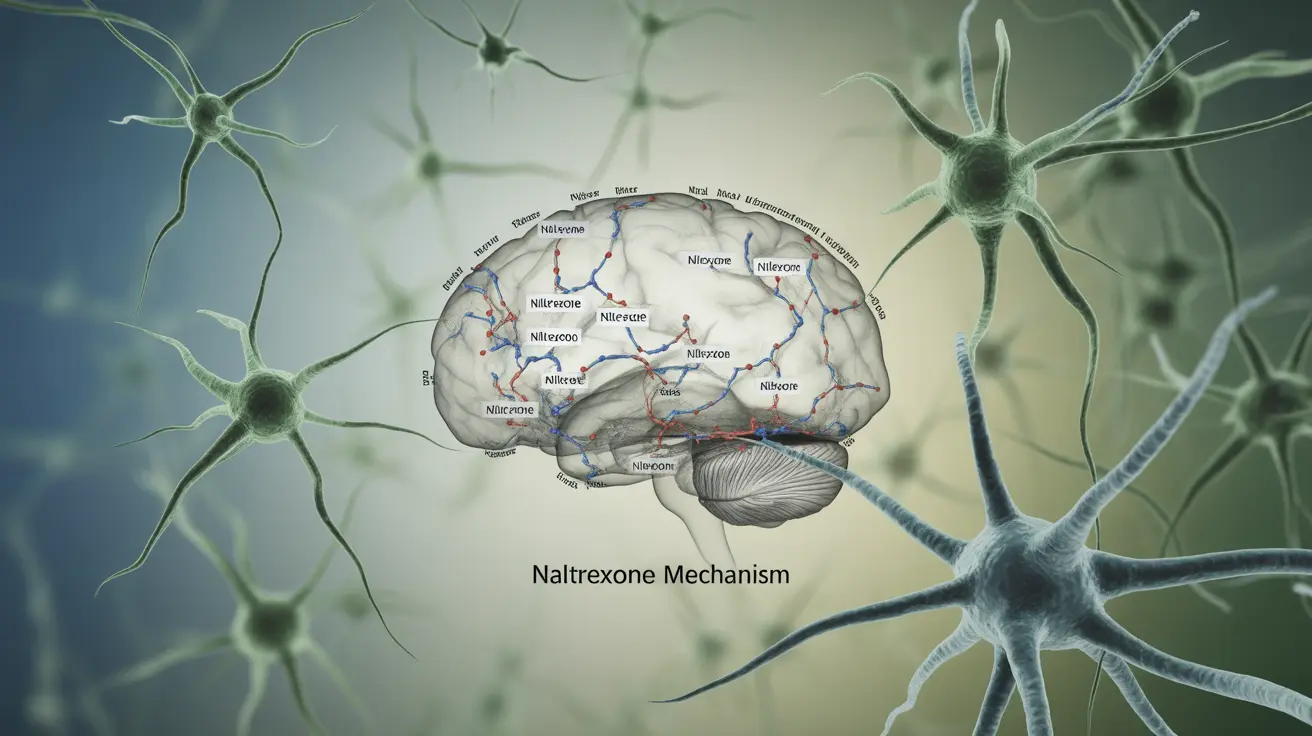For individuals struggling with alcohol use disorder (AUD), naltrexone offers a scientifically-proven medication option that can significantly reduce alcohol cravings and help maintain sobriety. This FDA-approved medication works by blocking the pleasurable effects of alcohol in the brain, making it easier for people to reduce their drinking or quit altogether.
Understanding how naltrexone works and its proper use is crucial for anyone considering this treatment option. Let's explore the essential aspects of naltrexone therapy, including its mechanisms, administration methods, and what to expect during treatment.
How Naltrexone Works in Treating Alcohol Use Disorder
Naltrexone functions primarily by blocking opioid receptors in the brain that are responsible for the rewarding effects of alcohol. When these receptors are blocked, drinking alcohol doesn't produce the same pleasurable sensations, which helps reduce cravings and the urge to drink.
The medication doesn't cause unpleasant effects when drinking alcohol, unlike some other AUD medications. Instead, it simply helps minimize the reward pathway that typically reinforces drinking behavior.
Available Forms and Administration Methods
Naltrexone comes in two primary forms, each with its own advantages:
Oral Naltrexone
- Daily tablet form
- Typically taken once per day
- Requires consistent daily compliance
- More flexible dosing options
Injectable Naltrexone (Vivitrol)
- Monthly intramuscular injection
- Administered by healthcare providers
- Ensures consistent medication levels
- Better for those who struggle with daily medication
Side Effects and Safety Considerations
While naltrexone is generally well-tolerated, patients should be aware of potential side effects:
- Nausea
- Headache
- Dizziness
- Anxiety
- Sleep problems
- Mild joint or muscle pain
Important safety considerations include:
- Must be opioid-free for 7-14 days before starting
- Regular liver function monitoring
- Not suitable for those with acute hepatitis or liver failure
- Should not be taken while using opioid medications
Comparing Naltrexone and Semaglutide
Recent research has shown interest in semaglutide (Ozempic) for alcohol use disorder, though it's not FDA-approved for this purpose. While naltrexone directly targets alcohol cravings through opioid receptor blockade, semaglutide may reduce alcohol consumption through different mechanisms related to appetite regulation and reward pathways.
Treatment Duration and Effectiveness
The optimal duration of naltrexone treatment varies by individual, but research suggests:
- Minimum treatment period of 3-6 months
- Some patients benefit from longer-term treatment
- Success rates improve with concurrent counseling
- Regular monitoring and adjustment of treatment plans
Frequently Asked Questions
How does naltrexone help reduce alcohol cravings and drinking in alcohol use disorder?
Naltrexone blocks opioid receptors in the brain that are responsible for the pleasurable effects of alcohol. This mechanism reduces alcohol cravings and helps break the reward cycle associated with drinking, making it easier for individuals to reduce their alcohol consumption or maintain abstinence.
What are the different forms of naltrexone available for treating alcohol use disorder and how are they administered?
Naltrexone is available as a daily oral tablet and as a monthly injectable form (Vivitrol). The oral form is taken once daily, while the injectable version is administered by a healthcare provider once monthly, offering different options to suit individual needs and compliance capabilities.
What side effects and risks should I be aware of before starting naltrexone for alcohol use disorder?
Common side effects include nausea, headache, dizziness, and sleep problems. Patients must be opioid-free before starting treatment and should have regular liver function monitoring. The medication is contraindicated in acute hepatitis or liver failure and cannot be taken with opioid medications.
Can semaglutide (Ozempic) be used to reduce alcohol cravings, and how does it compare to naltrexone?
While semaglutide shows promise in reducing alcohol consumption through its effects on appetite and reward pathways, it's not FDA-approved for treating alcohol use disorder. Naltrexone remains the established treatment with proven effectiveness specifically for alcohol cravings through its opioid receptor blocking mechanism.
How long should naltrexone treatment last for effective management of alcohol use disorder?
Treatment duration typically ranges from 3-6 months minimum, with some patients benefiting from longer-term use. The most effective outcomes are seen when naltrexone is combined with counseling and regular medical monitoring, with treatment length personalized to individual needs and response.




